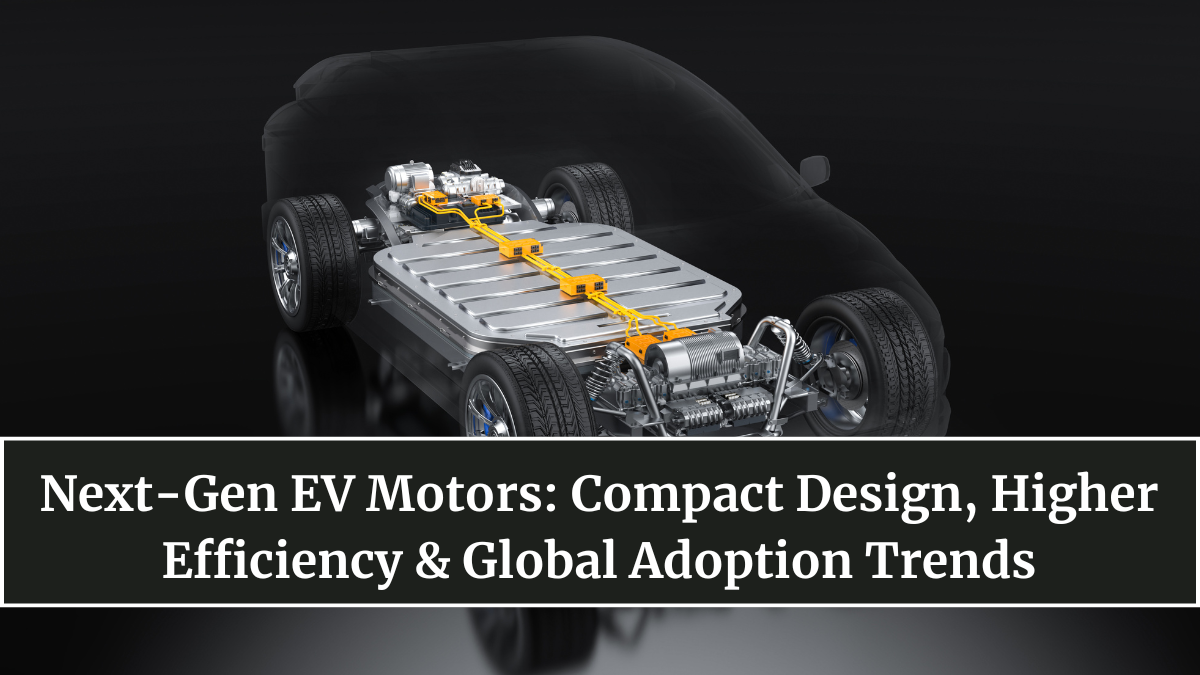Electric vehicles are no longer niche machines—they’re the future of global transportation. At the heart of this transformation lies the next generation of EV motors, designed to deliver more power, higher efficiency, and compact architecture that pushes the boundaries of performance and sustainability.
In 2025, EV motor technology is advancing faster than ever. Manufacturers are focusing on lighter, smarter, and more energy-dense drive systems, ensuring vehicles go farther, charge faster, and cost less to maintain. This evolution is reshaping not only electric cars but also electric buses, bikes, and even aircraft.

What Makes Next-Gen EV Motors Different
Unlike traditional induction motors, today’s next-gen EV motors use advanced materials, integrated electronics, and optimized magnetic structures. These improvements drastically cut energy loss and enhance torque delivery.
The biggest innovations driving this leap forward include:
-
Permanent Magnet-Free Designs: New motor types reduce dependency on rare earth materials while maintaining high torque output.
-
Axial Flux Architecture: Motors are becoming thinner and more compact, improving power-to-weight ratios.
-
Integrated Inverters and Controllers: Combining motor and inverter electronics minimizes heat loss and boosts efficiency.
-
Advanced Cooling Systems: Liquid and oil cooling methods now allow higher continuous output without overheating.
Together, these advancements are making EVs lighter, faster, and more affordable, while reducing the environmental cost of production.
Efficiency: The New Performance Metric
Earlier, horsepower was everything. In the EV era, efficiency is the true performance benchmark. Modern EV motors can achieve over 95% efficiency, converting almost all electrical energy into motion.
Key contributors to this efficiency boost include:
-
Optimized Winding Designs to minimize energy loss.
-
Silicon Carbide (SiC) Power Electronics for reduced thermal resistance.
-
Precision Manufacturing using 3D printing for magnetic cores and rotor components.
This means every charge takes you farther, while regenerative braking systems return more power to the battery, increasing real-world range.
Global Leaders Driving EV Motor Innovation
Automakers and startups across the world are racing to perfect next-gen motor designs:
-
Tesla has introduced advanced “Plaid” motors with carbon-sleeved rotors that achieve extreme RPM stability.
-
Lucid Motors is setting new standards with ultra-compact 67 kg drive units producing over 670 horsepower.
-
BYD and Hyundai are developing integrated motor-inverter systems for cost-effective mass manufacturing.
-
Bosch and Mahindra Electric are investing in modular EV motor platforms suited for 2-wheelers, 3-wheelers, and light commercial EVs.
These advancements underline how engineering innovation is now as much about efficiency as it is about power.
Compact Designs: Smaller Motors, Bigger Possibilities
The latest trend in 2025 is miniaturization with intelligence. Compact EV motors are enabling:
-
More cabin space without sacrificing performance.
-
Dual-motor and tri-motor setups for precise all-wheel control.
-
Better packaging flexibility for designers to optimize aerodynamics.
Lightweight motors also improve acceleration and handling while extending battery life—especially critical for small EVs and two-wheelers in urban markets like India, Europe, and Southeast Asia.
The Push for Rare Earth-Free Solutions
Sustainability is becoming a major priority. Most earlier EV motors relied heavily on rare earth magnets, which are expensive and environmentally taxing to mine.
Now, manufacturers are moving toward rare earth-free alternatives, such as:
-
Induction Motors: Used widely by Tesla in early models for durability and low cost.
-
Switched Reluctance Motors (SRM): Offering high torque and simplified manufacturing.
-
Magnetless Synchronous Motors: Providing the same efficiency without critical materials.
These designs not only reduce geopolitical dependencies but also make EV production more environmentally responsible.
Global Adoption and Market Outlook
By 2025, over 65% of EVs sold globally use some form of next-gen motor design. Growth is driven by three main factors:
-
Government Incentives: Nations are investing in EV R&D to achieve carbon-neutral transport.
-
Lower Manufacturing Costs: Modular and scalable motor production is cutting per-unit prices.
-
Broader Application: Next-gen motors are powering not just cars but delivery vans, e-bikes, drones, and industrial robots.
As adoption grows, economies of scale will push EV prices closer to parity with combustion vehicles, making clean mobility the default.
The Future of EV Motor Innovation
Looking ahead, next-gen motors will evolve in three main directions:
-
AI-Optimized Drive Systems: Self-learning algorithms that adjust torque, cooling, and regeneration dynamically.
-
Wireless Power Integration: Motors connected with wireless charging ecosystems.
-
Solid-State Control Chips: Enabling ultra-fast response times for precision driving.
By 2030, expect EV motors to become smarter, modular, and self-regulating, working in harmony with batteries and AI control units to deliver seamless efficiency.
FAQs
What is a next-gen EV motor?
It’s an advanced electric motor designed for higher efficiency, compactness, and better energy utilization than traditional EV motors.
Why are compact motors important?
They save space, reduce vehicle weight, and improve energy efficiency, enabling better range and performance.
Do next-gen motors use rare earth materials?
Many manufacturers are now shifting to rare earth-free or magnetless motor designs to reduce costs and environmental impact.
Which companies lead in EV motor innovation?
Tesla, Lucid, Bosch, BYD, and Hyundai are among the key global innovators in motor technology.
How efficient are new EV motors?
Modern motors can achieve over 95% efficiency, meaning nearly all electric energy is converted into usable motion.
Click here to know more.
